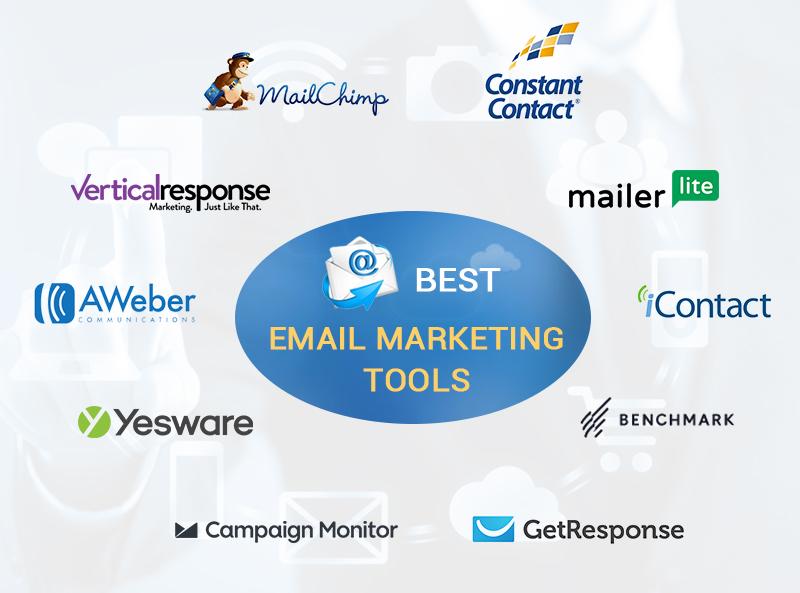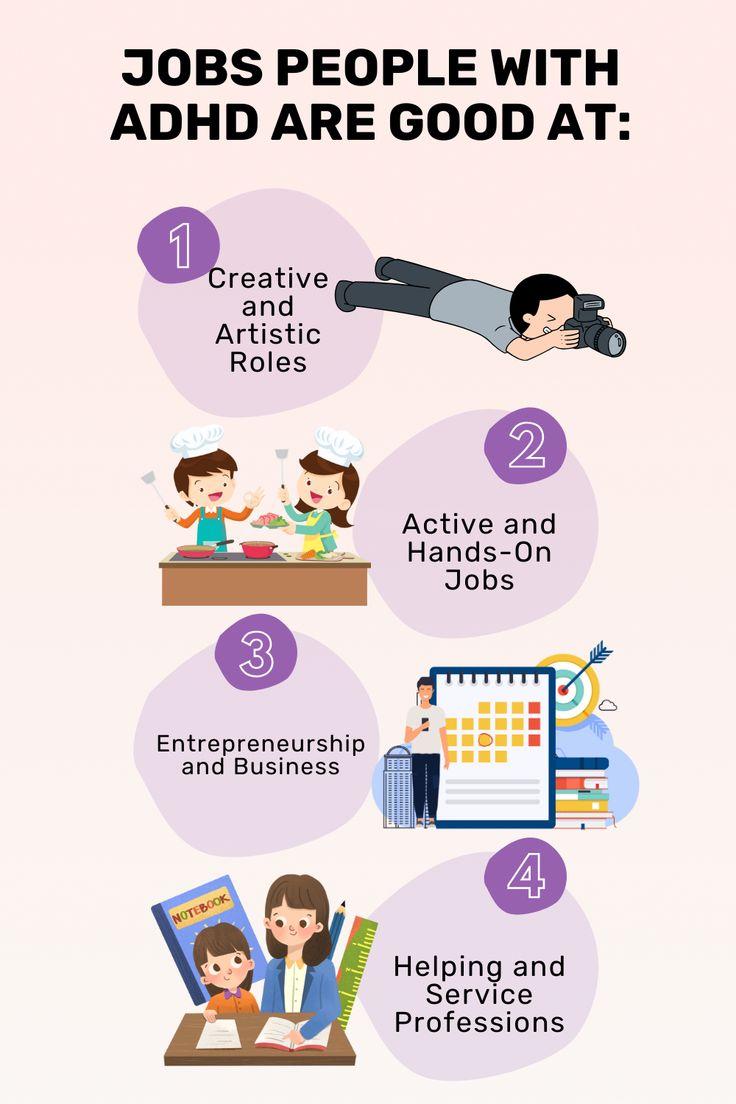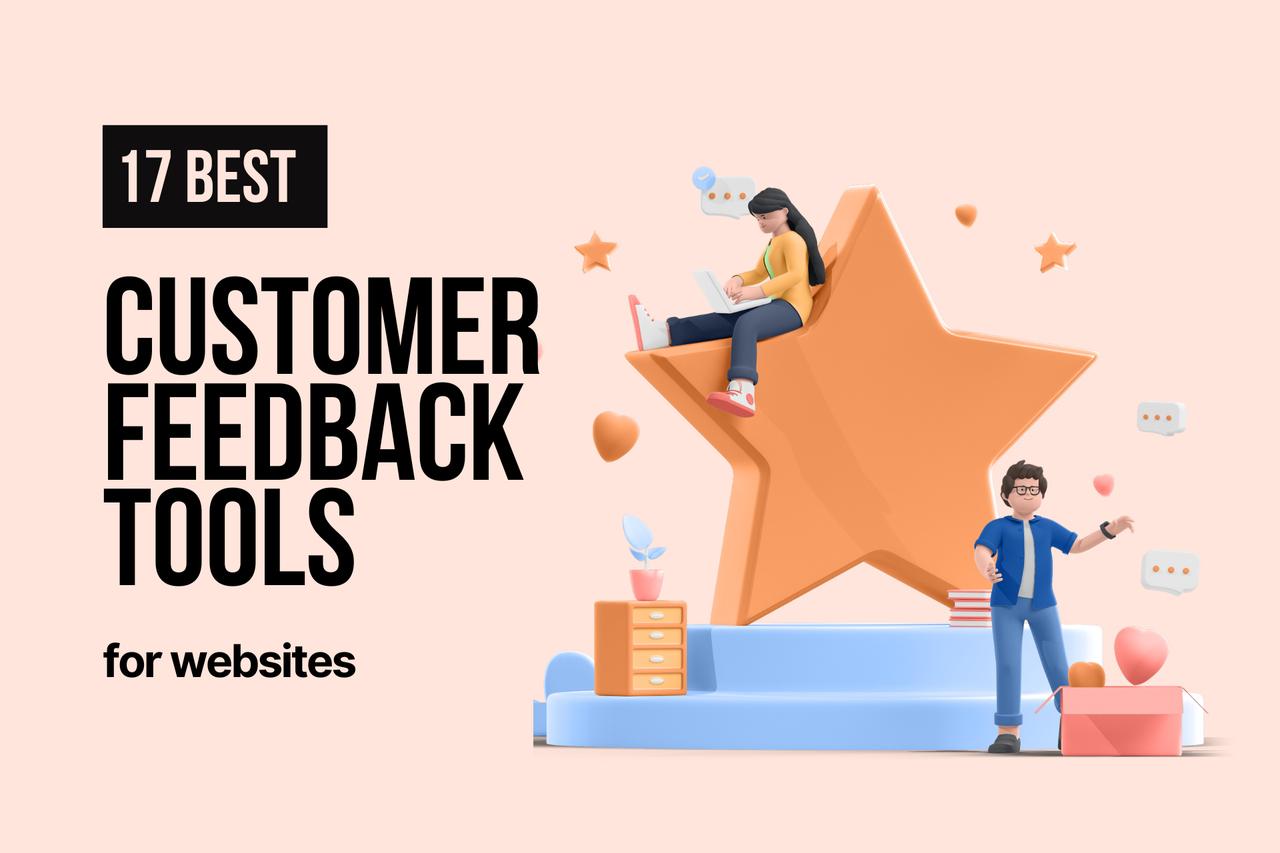
How to Start an AI Company in 2025 (+15 Best Business Ideas)
If you’ve ever dreamed of jumping into the future and making your mark in the world of technology, 2025 might just be your golden ticket. With artificial intelligence continuing to transform industries at lightning speed, the potential to launch a successful AI startup has never been more promising. But where do you start? What ideas are worth pursuing? You might be feeling a mix of excitement and uncertainty, and that’s completely normal! The good news is that this article is here to guide you through the exhilarating journey of starting your own AI company. We’ll explore the fundamental steps you need to take, while also diving into 15 innovative business ideas that could put you at the forefront of this tech revolution. Whether you’re a seasoned entrepreneur or new to the startup scene, let’s unpack the opportunities that lie ahead and set you on the path to success in the AI landscape!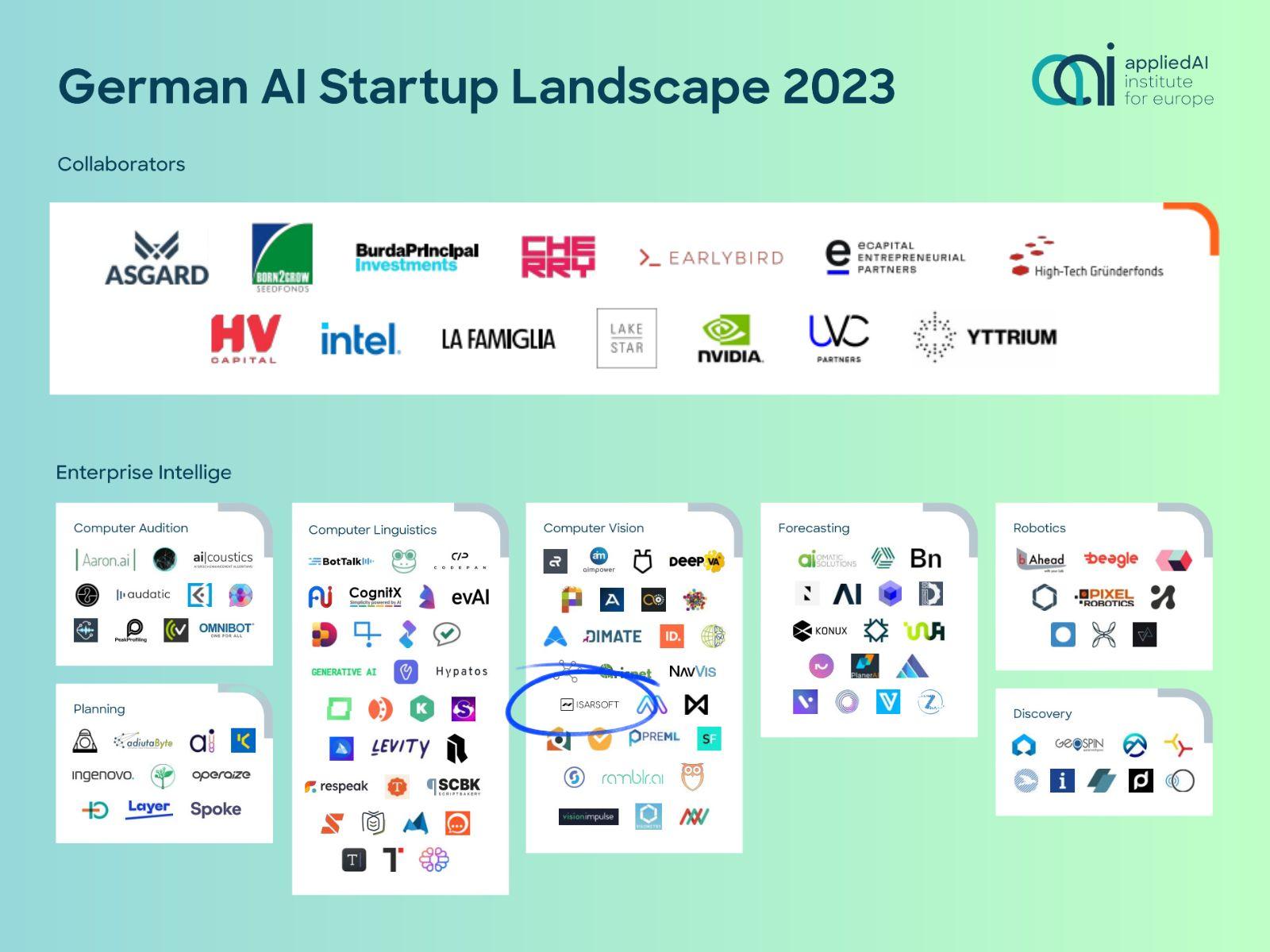
How to Identify the Right Niche for Your AI Startup
Finding the right niche for your AI startup is crucial for establishing a successful venture. With the rapid advancements in AI technology, the opportunities are abundant, but so are the challenges. To carve out a path for your business, consider the following key strategies:
- Identify Your Passion and Expertise: Think about your interests and areas where you have knowledge. Merging your passion with your skill set can lead to a more fulfilling and sustainable business.
- Analyze Market Trends: Stay updated on current trends within the AI landscape. Use tools like Google Trends or industry reports to gauge interest and potential growth areas.
- Understand Your Target Audience: Define who your ideal customers are. What problems do they face that AI can solve? Conduct surveys or interviews to gather insights directly from potential users.
- Evaluate the Competition: Research existing startups and companies in your desired niche. What are they doing well? Where are the gaps in their offerings that you could fill?
- Consider Scalability: Choose a niche that allows for expansion. Think about how your AI solution can evolve over time to meet changing market demands.
Once you’ve explored these dimensions, it helps to visualize your findings. Create a SWOT analysis table to evaluate your strengths, weaknesses, opportunities, and threats in relation to your chosen niche:
| Strengths | Weaknesses | Opportunities | Threats |
|---|---|---|---|
| Expertise in AI technology | Lack of market presence | Increasing demand for AI solutions | Intense competition |
| Innovative ideas | Limited funding | Emerging markets | Rapid technological changes |
Additionally, get feedback from peers or mentors within the industry. They can provide valuable insights that may steer your niche selection in a more promising direction. Networking at AI conferences or joining relevant online communities can also expose you to ideas from other entrepreneurs.
Lastly, don’t forget to remain flexible. The AI sector is dynamic, and the niche you choose today may evolve tomorrow. Keep an eye on emerging technologies and be ready to pivot your business model to stay relevant.
Understanding the Latest AI Trends and Technologies
As we step into 2025, it’s crucial to keep an eye on the evolving landscape of artificial intelligence. Understanding the latest trends and technologies not only positions you as an informed entrepreneur but also opens doors to innovative business opportunities. Here’s a dive into what’s shaping the AI industry today.
One of the most significant trends is the rise of generative AI. This technology, which focuses on creating new content—be it text, images, or even music—has gained immense traction. Companies are leveraging generative models to enhance creativity and streamline content production. Consider these applications:
- Content generation for marketing campaigns
- Automated graphic design solutions
- Personalized music and audio creation
Another key trend is the increasing focus on AI ethics and transparency. As AI systems become more powerful, the need for ethical guidelines becomes paramount. This includes developing AI that is fair, accountable, and transparent. Businesses that prioritize ethical AI practices are not just compliant; they build trust and brand loyalty among consumers.
Moreover, the integration of AI in healthcare is revolutionizing patient care. From predictive analytics that help in early diagnosis to AI-driven drug discovery, the healthcare sector is ripe for innovation. With ongoing advancements, entrepreneurs can explore avenues such as:
- Telemedicine platforms enhanced by AI diagnostics
- AI-powered patient management systems
- Wearable technology that monitors health metrics
On the technical side, the emergence of edge AI is transforming how data is processed. By allowing data to be processed closer to the source rather than relying solely on central servers, businesses can achieve faster and more efficient operations. This trend is particularly beneficial in sectors like manufacturing and autonomous vehicles.
Furthermore, the use of AI in cybersecurity is becoming increasingly critical. As cyber threats grow more sophisticated, AI algorithms are essential in predicting and mitigating risks. This opens opportunities for businesses specializing in:
- Real-time threat detection systems
- Automated incident response solutions
- AI-driven vulnerability assessment tools
| AI Trend | Business Opportunity |
|---|---|
| Generative AI | Marketing Content Solutions |
| AI Ethics | Consultancy Services |
| Healthcare AI | Telemedicine Platforms |
| Edge AI | Smart Manufacturing Systems |
| AI Cybersecurity | Threat Detection Services |
Lastly, keep an eye on the trend of AI democratization. The increasing accessibility of AI tools means that even small businesses can harness the power of AI without extensive resources. This opens up a plethora of opportunities for new startups to emerge, offering tailored AI solutions to niche markets.
By staying attuned to these trends, you can not only identify lucrative business ideas but also position your AI company for long-term success in a competitive landscape. Embracing innovation, ethical practices, and a customer-centric approach will set you apart as a leader in the AI revolution.

Crafting a Solid Business Plan for Your AI Venture
Crafting a solid business plan is crucial for any startup, especially in the rapidly evolving field of artificial intelligence. A well-structured plan not only helps you clarify your vision but also serves as a roadmap for your journey ahead. Here are some key components to consider as you develop your AI venture.
1. Executive Summary
Your executive summary is the first impression potential investors will have of your business. Make it concise yet compelling. Highlight your unique value proposition, the market need you’re addressing, and a brief overview of your financial projections. Remember, this section should entice readers to dive deeper into your plan.
2. Market Analysis
A thorough market analysis is essential to understand your competitive landscape. Identify your target audience and their pain points, and analyze existing solutions in the market. Key points to cover include:
- Market Size: Estimate the total addressable market for your AI solution.
- Trends: Discuss emerging trends in AI that could impact your business.
- Competitors: List key competitors and analyze their strengths and weaknesses.
3. Business Model
Your business model outlines how you plan to make money. Will you charge a subscription fee, offer a freemium model, or rely on licensing? Clearly define your revenue streams and justify them based on your market analysis. Consider these questions:
- What is your pricing strategy?
- How will you attract and retain customers?
- What partnerships could enhance your offering?
4. Technology and Development
In the AI sector, your technology is your lifeblood. Describe the AI technologies you plan to leverage and how they will solve your target audience’s problems. Outline your product development strategy, including:
- Timeline: Key milestones in your development process.
- Resources: Team members, tools, and technologies needed.
- Testing: Strategies for product testing and iteration.
5. Financial Projections
Providing realistic financial projections is essential for instilling confidence in potential investors. Create a table that outlines your projected revenues, expenses, and profits over the next three to five years:
| Year | Projected Revenue | Projected Expenses | Projected Profit |
|---|---|---|---|
| Year 1 | $250,000 | $200,000 | $50,000 |
| Year 2 | $500,000 | $350,000 | $150,000 |
| Year 3 | $1,000,000 | $600,000 | $400,000 |
6. Funding Requirements
Clearly outline how much funding you need and how you plan to use it. Be specific about what each dollar will achieve, whether it’s for technology development, marketing, or team expansion. This transparency will build trust with potential investors.
7. Conclusion
Your business plan is not just a document; it’s a living guide that should evolve as your AI venture grows. Regularly revisit and revise your plan to reflect changes in the market, technology, and your own business goals. A dynamic business plan will enable you to adapt and thrive in the ever-changing landscape of artificial intelligence.
Building a Winning Team with the Right Skills
As you embark on the exciting journey of launching an AI company in 2025, one of the most critical aspects to consider is assembling a team equipped with the right skills. In the fast-evolving world of artificial intelligence, having a talented and diverse group of individuals can make all the difference. It’s not just about hiring the most experienced professionals; it’s about finding individuals who complement each other’s strengths and can work collaboratively toward a common goal.
To build a winning team, you should focus on several key skill sets:
- Technical Skills: Your team should include AI researchers and developers with expertise in machine learning, natural language processing, and data science. Look for candidates who are proficient in languages like Python and frameworks such as TensorFlow or PyTorch.
- Business Acumen: Having team members who understand market dynamics, customer needs, and strategic planning is crucial. Their insights will help align product development with market demands.
- Design Thinking: Incorporating UX/UI designers who prioritize user experience can enhance the usability and appeal of your AI products, making them more market-ready.
- Ethics and Compliance: With growing concerns about AI ethics, it’s essential to have someone on your team who understands legal and ethical implications in AI deployment.
When recruiting, consider the following strategies to attract top talent:
- Networking: Attend industry conferences, webinars, and meetups related to AI to connect with potential candidates and foster relationships.
- Online Presence: Promote your company’s mission and culture on platforms like LinkedIn to draw in like-minded individuals who share your vision.
- Internship Programs: Establish partnerships with universities to create internship opportunities, offering students hands-on experience while identifying potential full-time hires.
Fostering a collaborative environment is just as vital as hiring the right skills. Encourage open communication and brainstorming sessions where ideas can flow freely. Implementing agile methodologies can help your team remain adaptable and responsive to changes. It’s essential to build a culture where feedback is valued, and team members feel empowered to express their thoughts without fear.
Consider the following attributes when evaluating potential team members:
| Attribute | Description |
|---|---|
| Problem Solver | Ability to analyze complex issues and develop innovative solutions. |
| Adaptable | Willingness to learn and adjust to new technologies and methodologies. |
| Team Player | Collaborative spirit and willingness to support colleagues. |
building a successful AI company in 2025 hinges on your ability to assemble a team with the right mix of skills and attributes. Prioritize strategic hiring, foster a collaborative culture, and remain adaptable to the ever-changing landscape of artificial intelligence. By doing so, you’ll position your company for lasting success in a competitive market.
Navigating the Legal Landscape for AI Companies
Starting an AI company in 2025 requires a keen understanding of the legal landscape that governs technology and innovation. With the rapid advancements in AI, legal frameworks are constantly evolving, making it essential for entrepreneurs to stay informed about existing and emerging regulations. Here are several key areas to consider:
- Intellectual Property (IP) Rights: Protecting your innovations is crucial. This includes securing patents for unique algorithms, trademarks for your brand, and copyrights for software and content. Understanding how IP laws apply to AI can safeguard your competitive edge.
- Data Privacy Regulations: Compliance with data protection laws like GDPR (General Data Protection Regulation) and CCPA (California Consumer Privacy Act) is vital. These regulations dictate how you collect, store, and utilize customer data, impacting AI training and operational processes.
- Liability Issues: As AI systems become more autonomous, questions of liability for errors or harms caused by AI technologies arise. It’s essential to delineate responsibility clearly, especially if your AI applications operate in critical sectors like healthcare or transportation.
- Ethical Considerations: AI companies face increasing scrutiny regarding ethical practices. Establishing guidelines for fairness, transparency, and accountability in your AI solutions not only builds trust but also aligns with evolving legal standards.
- Regulatory Compliance: Different industries have specific regulations affecting AI applications. For instance, fintech, healthcare, and autonomous vehicles are heavily regulated fields. Understanding these industry-specific regulations can streamline your entry into the market.
To navigate these complexities, consider building a robust legal framework from the outset. Hiring a legal expert with experience in tech and AI can be a game-changer. They can help you draft contracts, ensure compliance with regulations, and protect your intellectual property effectively.
Ultimately, staying abreast of legal changes and engaging with industry groups can provide valuable insights. Many organizations focus on shaping the future of AI policy, and being part of these groups can give you a voice in the discussions that will define the landscape.
| Legal Consideration | Key Focus Areas |
|---|---|
| Intellectual Property | Patents, Trademarks, Copyrights |
| Data Privacy | GDPR, CCPA Compliance |
| Liability | Defining Responsibility |
| Ethics | Fairness, Transparency |
| Regulatory Compliance | Industry-Specific Rules |
starting an AI company involves more than just innovative ideas and technological expertise. A comprehensive understanding of the legal landscape is essential for sustainable growth and long-term success. By prioritizing legal compliance and ethical considerations, you can not only protect your venture but also contribute to a responsible AI ecosystem.
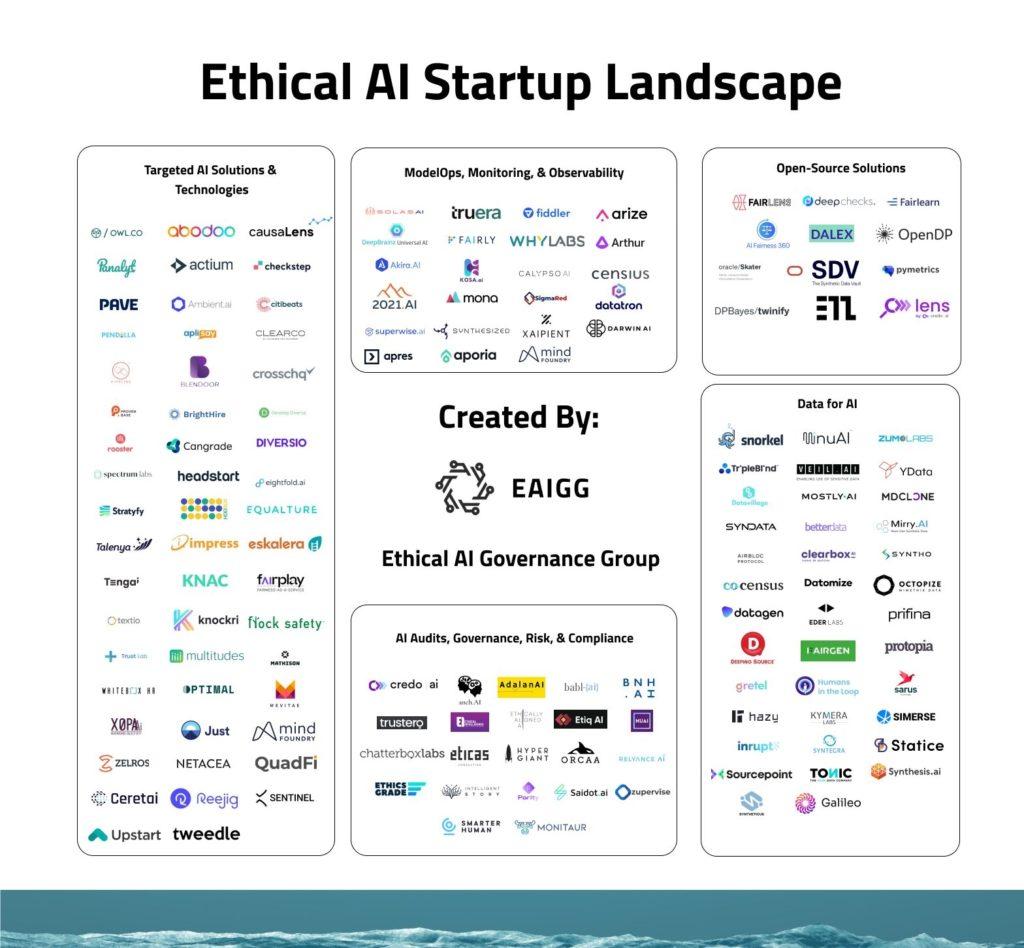
Funding Your AI Startup: Tips and Strategies
Securing funding for your AI startup can be a daunting task, but with the right strategies, you can enhance your chances of attracting investors. First and foremost, understand your market. Conduct thorough research to pinpoint the specific needs and gaps that your AI solution addresses. This not only strengthens your business model but also makes it easier to present a compelling case to potential investors.
Next, consider building a minimal viable product (MVP) before seeking funding. An MVP demonstrates your concept’s feasibility and allows you to showcase real-world applications of your AI technology. This tangible proof can be pivotal when pitching to investors, as it provides them with a clearer picture of your startup’s potential.
Networking is another crucial element in the funding landscape. Attend industry conferences, seminars, and networking events to connect with investors who have a genuine interest in AI. Here, you can find the right fit for your business, whether they are venture capitalists, angel investors, or corporate partners. Don’t shy away from using online platforms like LinkedIn to expand your professional connections.
When preparing your pitch, focus on creating a strong value proposition. Clearly articulate how your AI solution stands out from competitors and why it’s worth investing in. Highlight not just the technology, but also the market potential, scalability, and revenue model. Investors are often looking for startups that can disrupt industries, so be prepared to explain how you plan to do just that.
Additionally, explore alternative funding sources that are becoming increasingly popular in the tech landscape. Consider options like:
- Crowdfunding: Platforms such as Kickstarter or Indiegogo can provide initial funding while also gauging public interest.
- Grants: Look for government or private grants specifically aimed at AI innovation.
- Incubators and Accelerators: These programs often provide funding, mentorship, and access to networks that can be invaluable in the early stages.
Lastly, always emphasize your team’s expertise and experience in the AI sector during discussions with potential investors. Investors want to know that the individuals behind the startup are capable and knowledgeable. Showcase any past successes, relevant skills, and your collective passion for AI technology.
To keep track of your funding options, consider using a simple comparison table that outlines the various avenues available:
| Funding Source | Pros | Cons |
|---|---|---|
| Crowdfunding | Access to a large pool of small investors | Requires significant marketing effort |
| Grants | No equity loss | Highly competitive application process |
| Incubators | Mentorship and support | May require equity stake |
| Venture Capital | Large funding amounts | Potential loss of control |
By approaching funding strategically and leveraging all available resources, you can set your AI startup on a path to success. Remember, persistence is key; the right opportunity will arise if you remain focused and adaptable.

Marketing Your AI Product to Stand Out in the Market
In the crowded landscape of AI products, it’s not enough to simply have a cutting-edge technology. You need a robust marketing strategy to ensure your innovation captures attention and resonates with your target audience. Here are some effective strategies to consider:
- Identify Your Unique Value Proposition: Before you can market your AI product, you must understand what makes it unique. Whether it’s superior accuracy, ease of use, or cost-effectiveness, clearly define your product’s standout features.
- Leverage Storytelling: People connect with stories more than they do with statistics. Craft a compelling narrative around your AI product that highlights real-world applications and success stories that your audience can relate to.
- Utilize Influencer Partnerships: Collaborating with industry influencers can give your product credibility and expand your reach. Choose influencers who align with your brand values and who can effectively communicate your product’s benefits to their audience.
- Focus on Educational Content: Position your company as a thought leader in the AI space by creating valuable content. Webinars, whitepapers, and blog posts can help demystify your product, illustrating its benefits and potential use cases.
Creating a community around your AI product can also significantly enhance your marketing efforts. Engaging with users through forums, social media, and dedicated platforms can foster loyalty and generate word-of-mouth referrals. Here’s how to build that community:
- Host Online Events: Virtual meetups, Q&A sessions, and demos can provide potential customers a firsthand experience of your product while allowing you to gather valuable feedback.
- Encourage User-Generated Content: Invite your users to share their success stories and experiences with your product. This not only builds community but also serves as authentic testimonials.
- Implement a Referral Program: Reward your current users for referring new customers. This can incentivize them to spread the word about your product.
Another pivotal aspect of your marketing strategy should be data-driven decision-making. Utilize analytics tools to track the effectiveness of your campaigns and user engagement. Here’s a simple table to help you outline your key performance indicators (KPIs):
| Metric | Description | Target |
|---|---|---|
| Customer Acquisition Cost | Cost associated with acquiring a new customer | Decrease by 20% in the next quarter |
| Engagement Rate | Percentage of users interacting with your content | Increase to 10% within 6 months |
| Conversion Rate | Percentage of leads that become paying customers | Raise to 5% by end of year |
don’t underestimate the power of SEO and online presence. Optimize your website and content for search engines to ensure that potential customers can easily find you. Invest in targeted ads to bolster visibility and drive traffic to your platform. By using a combination of organic and paid strategies, you can create a comprehensive marketing plan that showcases your AI product effectively.
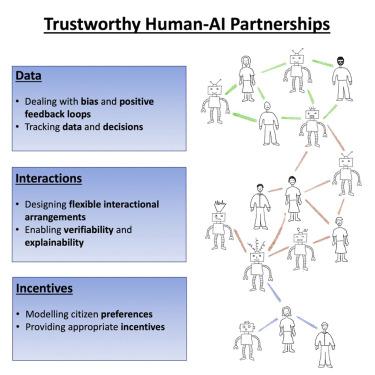
Key Partnerships That Can Propel Your AI Business Forward
When it comes to building a successful AI business, the strength of your partnerships can be just as critical as your technology. Collaborating with the right entities can provide you with access to resources, expertise, and networks that can accelerate your growth. Here are some key partnerships to consider:
- Academic Institutions: Partnering with universities and research centers can give you access to cutting-edge research, talented graduates, and collaborative projects. This relationship can enhance your credibility and keep you at the forefront of innovation.
- Technology Providers: Aligning with cloud service providers and software platforms can give you the infrastructure you need to scale your AI solutions effectively. Look for partners who offer robust APIs and tools that integrate seamlessly with your offerings.
- Industry Leaders: Forming alliances with established companies in your target industry can provide valuable insights and facilitate market entry. They can also become early adopters of your technology, serving as case studies for potential clients.
- Investors and Accelerators: Building relationships with venture capitalists and startup accelerators can provide not just funding but also mentorship and guidance from seasoned professionals who have navigated the startup landscape.
Moreover, consider the following collaboration strategies to enhance your partnership potential:
- Joint Ventures: Launch a joint product or service with another company to pool resources and expertise while mitigating risk.
- Co-marketing Efforts: Collaborate on marketing campaigns to reach a broader audience, leveraging each other’s customer base.
- Shared Research Initiatives: Work together on research projects to explore new applications for AI, which can lead to innovative solutions that benefit both parties.
It’s also essential to foster a strong network of mentors and advisors. Here’s a simple table to illustrate the types of partners you might consider:
| Partner Type | Benefits |
|---|---|
| Academic Institutions | Access to research, talent acquisition |
| Technology Providers | Scalable infrastructure, technical support |
| Industry Leaders | Market insights, case studies |
| Investors | Funding, mentorship |
Ultimately, your goal should be to create a synergistic ecosystem where all partners benefit. The right alliances can serve as a powerful catalyst, propelling your AI business forward as you tackle the challenges of 2025 and beyond.
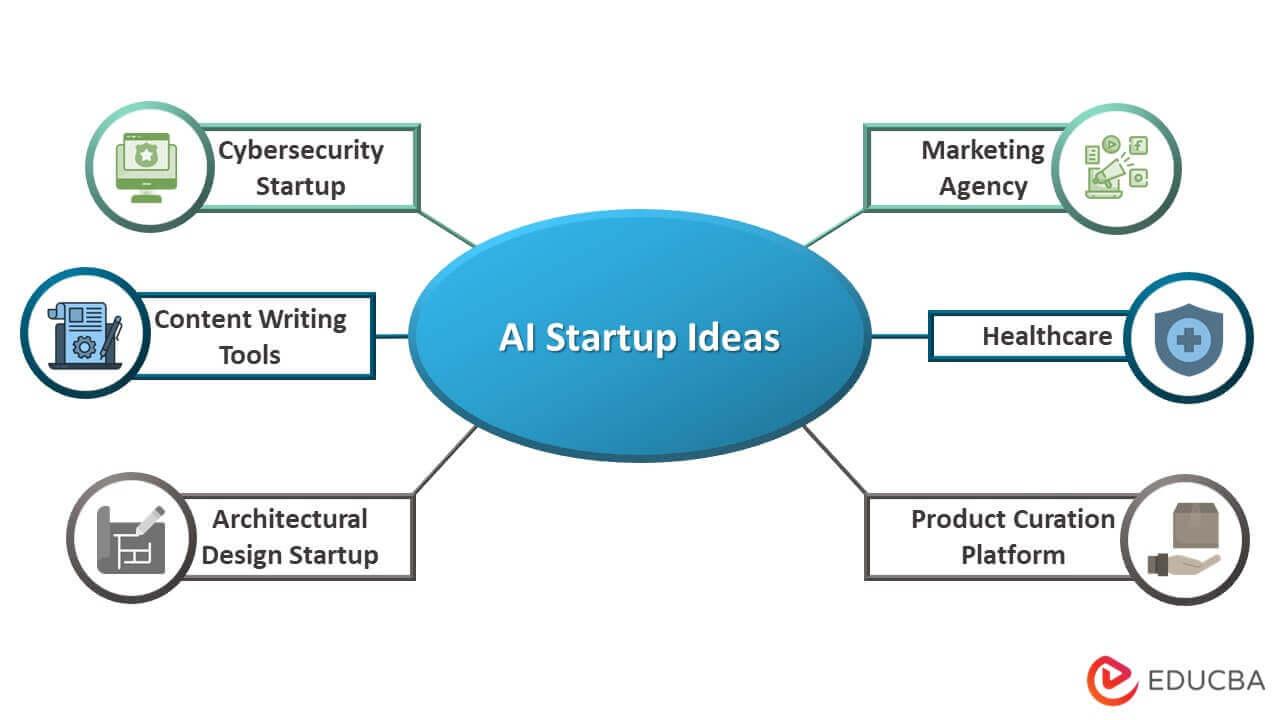
Top AI Business Ideas to Consider in 2025
As we look ahead to 2025, the potential for artificial intelligence in the business realm is boundless. Entrepreneurs eager to tap into the power of AI will find numerous opportunities waiting to be explored. Here are some compelling ideas that could inspire you to take the plunge into the world of AI.
AI-Powered Personal Assistants
The demand for virtual personal assistants is growing rapidly. Think beyond Siri and Alexa; you can create specialized AI assistants tailored for specific industries such as healthcare, legal, or finance. These assistants can manage tasks like scheduling, research, and customer inquiries, offering a seamless experience for users.
Smart Content Creation Tools
Content is king, and AI can play a pivotal role in its creation. Developing tools that utilize AI to generate high-quality written content, graphics, or even music can help businesses save time and resources. Imagine an AI that can draft articles, design logos, or compose jingles based on user input!
AI-Driven Customer Insights
Businesses thrive on understanding their customer base. By creating AI systems that analyze consumer behavior and purchasing patterns, you can provide companies with invaluable insights. This could be in the form of predictive analytics that helps businesses anticipate trends and adapt their strategies accordingly.
Healthcare AI Solutions
The healthcare sector is ripe for AI innovation. Developing applications that assist in diagnostics, patient management, or even predictive health analytics can significantly improve patient outcomes. Consider creating an AI tool that helps doctors identify diseases based on symptoms and patient history.
AI in Cybersecurity
With the increase in cyber threats, businesses are on the lookout for robust security solutions. AI-powered cybersecurity tools can analyze behavior patterns to detect and respond to threats in real-time. Starting a company that specializes in this area can not only be lucrative but also crucial for protecting sensitive data.
AI for Supply Chain Optimization
Supply chain management can be complex and inefficient. Developing AI solutions that optimize inventory levels, streamline logistics, and predict supply chain disruptions can save companies money and enhance their operations. Think about creating a platform that uses machine learning to forecast demand and adjust supply strategies accordingly.
AI in E-Learning
The education sector is evolving, and AI can enhance the learning experience. Consider platforms that personalize learning paths based on student performance or AI tutors that provide additional support in subjects where students struggle. These tools can make education more accessible and effective.
AI for Sustainability
As businesses strive to adopt sustainable practices, AI can help. Think about creating tools that analyze energy consumption, waste management, or carbon footprints, providing actionable insights for companies aiming to be more environmentally friendly.
| Business Idea | Target Industry | Potential Impact |
|---|---|---|
| AI-Powered Personal Assistants | Various | Increased efficiency and productivity |
| Smart Content Creation Tools | Marketing | Time-saving and enhanced creativity |
| AI-Driven Customer Insights | Retail | Better targeting and sales strategies |
| Healthcare AI Solutions | Healthcare | Improved diagnostics and patient care |
| AI in Cybersecurity | IT | Enhanced data protection |
| AI for Supply Chain Optimization | Logistics | Reduced costs and improved efficiency |
| AI in E-Learning | Education | Personalized learning experiences |
| AI for Sustainability | Environmental | Promotes eco-friendly practices |

Leveraging Data for Competitive Advantage
In the rapidly evolving landscape of business, data has emerged as a critical asset, serving as the foundation for informed decision-making and strategic planning. For entrepreneurs stepping into the AI sector in 2025, understanding how to harness and analyze data can mean the difference between thriving and merely surviving. With the right approach, data can illuminate customer behaviors, market trends, and operational efficiencies that drive competitive advantage.
First and foremost, start by identifying key data sources that align with your business objectives. These sources can include:
- Customer feedback and interactions
- Market research reports
- Social media analytics
- Sales and financial data
- Website and application usage metrics
Once identified, the next step is to implement robust data collection methods. Using AI-driven tools can significantly streamline this process, allowing you to gather and analyze vast amounts of data quickly. Consider employing:
- Customer Relationship Management (CRM) systems
- Data warehousing solutions
- AI chatbots for real-time feedback
- Web scraping tools for competitor analysis
After collecting data, the focus should shift to analysis and interpretation. Employing machine learning algorithms can help uncover patterns and insights that are not immediately obvious. For instance, predictive analytics can forecast customer behavior and preferences, enabling you to tailor your products or services to meet emerging demands. This proactive approach positions your business as a leader rather than a follower in the market.
Data visualization is another powerful tool. Utilizing dashboard tools can present insights in a clear, compelling manner. Here’s a simple representation of potential KPIs you could track:
| Key Performance Indicator | Purpose |
|---|---|
| Customer Acquisition Cost (CAC) | Measure the cost of acquiring a new customer. |
| Customer Lifetime Value (CLV) | Estimate the total revenue from a customer over their lifespan. |
| Churn Rate | Gauge the percentage of customers who stop using your service. |
| Net Promoter Score (NPS) | Assess customer loyalty and satisfaction. |
As your business grows, it’s essential to establish a data-driven culture within your organization. Encourage all team members to view data as a vital resource. Training sessions and workshops can be invaluable in fostering this mindset. When everyone understands the importance of data, your business can adapt more swiftly to changes and innovate continually.
remember that data privacy and ethics should never be overlooked. As you mine and utilize data, ensure compliance with regulations such as GDPR and CCPA. Building trust with your customers by transparently communicating how their data will be used can also strengthen your brand reputation, driving long-term loyalty.
By strategically leveraging data, your AI company can carve out a distinct competitive edge, fostering innovation and responsiveness in an ever-changing marketplace. The businesses that effectively utilize data today will be the leaders of tomorrow.

Creating a User-Centric AI Product
In today’s rapidly evolving tech landscape, creating an AI product that resonates with users is essential for success. This means understanding their needs, preferences, and behaviors deeply. Integrating user feedback into your development process can set you apart from competitors and ensure your product is not only functional but genuinely valuable.
To kickstart the journey, consider conducting thorough market research to identify gaps that your AI solution can fill. This involves:
- Identifying Pain Points: Engage with potential users to discover the challenges they face.
- Analyzing Competitors: Look at existing solutions and determine what they lack.
- Utilizing Surveys and Interviews: Collect direct insights from your target audience.
Once you have a clear understanding of user needs, it’s time to move on to the design phase. Here, creating a user-centric interface becomes crucial. Consider the following:
- Simplicity: Ensure that your design is intuitive and easy to navigate.
- Accessibility: Make your product usable for people with varying abilities.
- Responsive Design: Optimize for both mobile and desktop users.
Next, adopt an iterative development process. This means continuously refining your product based on user feedback. Implementing agile methodologies can facilitate this approach, allowing for rapid adjustments and enhancements. Regularly scheduled user testing sessions can provide invaluable insights into how your product is being used in real-world scenarios.
Another crucial element is the incorporation of personalization features. Users want experiences tailored to their preferences. This can involve:
- Adaptive Learning: Using AI to learn from user interactions and adjust functionality accordingly.
- Customizable Interfaces: Allow users to modify the layout and features they interact with.
- Predictive Analytics: Anticipate user needs based on their behavior patterns.
It’s also important to foster a strong community around your product. Engaging users through forums, social media, and feedback loops not only enhances loyalty but also contributes to continuous improvement. Users appreciate feeling part of the development journey, which can lead to invaluable word-of-mouth marketing.
As you finalize your product, consider creating a comprehensive onboarding process. This should encompass tutorials, FAQs, and customer support channels to ensure users can easily understand and utilize your AI product effectively. A seamless onboarding experience can significantly impact user retention and satisfaction.
| Focus Area | Action | Outcome |
|---|---|---|
| Market Research | Conduct surveys | Identify user needs |
| Design | Create intuitive UI | Enhance user experience |
| Development | Iterate based on feedback | Improve product fit |
| Community Building | Engage users | Foster loyalty |
| Onboarding | Create guides | Boost retention |
By adopting these strategies, you’ll not only create a user-centric AI product but also lay the groundwork for long-term success in the competitive AI landscape. Remember, the key to thriving in this space is to always listen to your users and adapt accordingly!
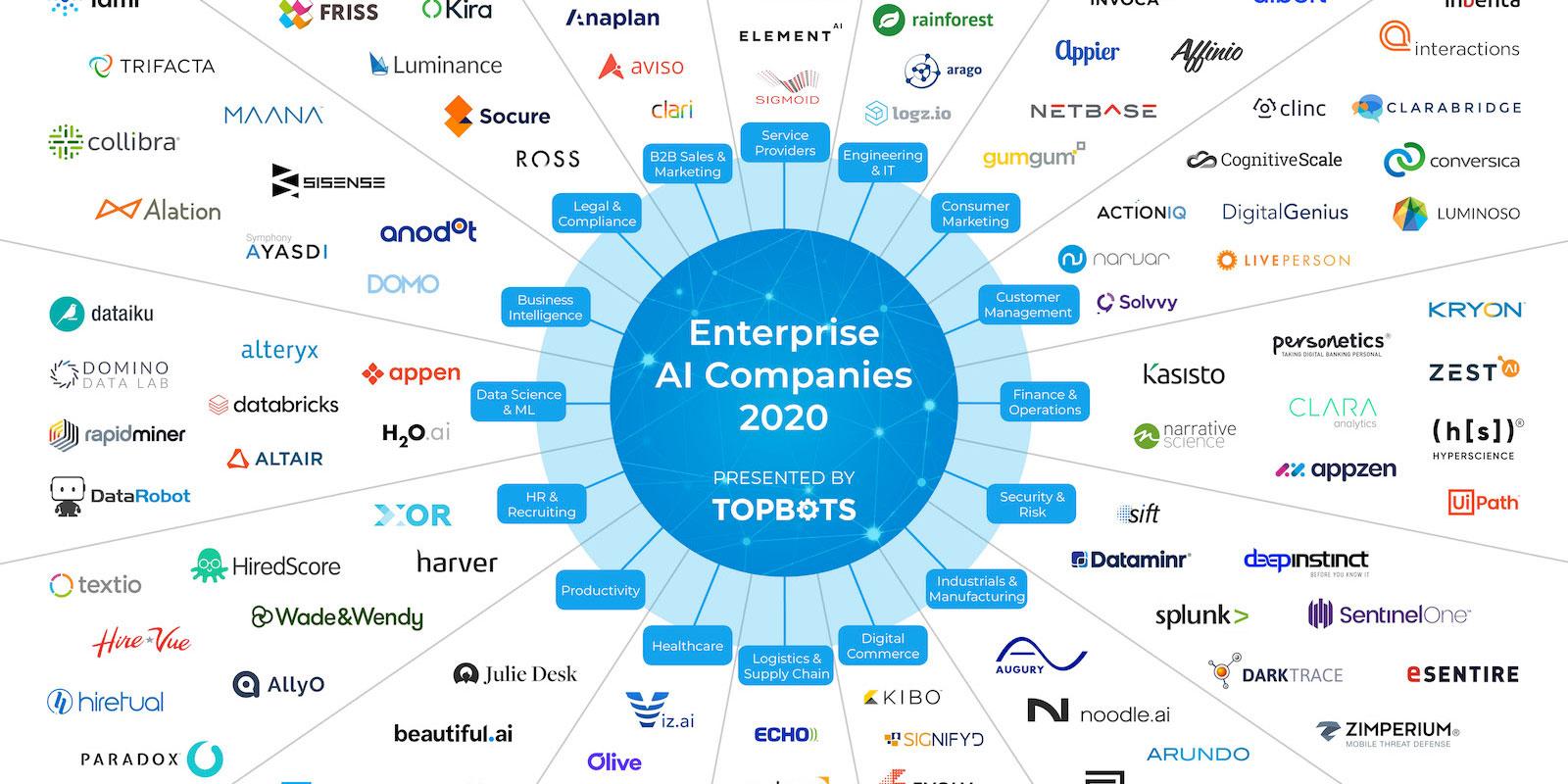
Scaling Your AI Company: Best Practices
Growing an AI company demands more than just innovative technology; it requires strategic planning and execution. Here are some best practices to ensure your scaling journey is smooth and sustainable.
- Embrace Agile Methodologies: Implementing agile practices allows your team to adapt quickly to changes in the market or technology landscape. Frequent iterations help in refining products by incorporating user feedback promptly.
- Focus on Data Quality: In AI, the adage “garbage in, garbage out” holds true. Invest in processes that ensure high-quality data collection, cleaning, and validation, as this will directly impact your model’s performance.
- Build a Strong Team: Attract talent that not only possesses technical expertise but is also aligned with your company culture. Continuous training and development should be integral to your employee engagement strategy.
When scaling, it’s crucial to ensure that your infrastructure can support growth. This means:
- Investing in Cloud Solutions: Cloud platforms offer the flexibility and scalability that on-premises solutions may lack. They allow you to manage large datasets and run complex algorithms without heavy upfront costs.
- Leveraging Automation: Automating repetitive tasks can free up valuable resources, enabling your team to concentrate on innovation and problem-solving.
Another critical aspect of scaling is effectively managing customer relationships. Consider implementing:
| Strategy | Description |
|---|---|
| Customer Feedback Loops | Regularly soliciting and analyzing customer feedback to improve products and services. |
| Personalization | Utilizing AI to tailor experiences based on user behavior and preferences. |
| Community Building | Creating forums or groups where users can share experiences and ideas, fostering loyalty. |
don’t underestimate the power of partnerships. Collaborating with other organizations can lead to:
- Shared Resources: Pooling resources can help mitigate costs associated with development and marketing.
- Joint Ventures: Teaming up with complementary businesses can open new markets and customer bases.
- Access to Expertise: Partnerships can provide insights and skills that your team may currently lack.
By following these best practices, you can set your AI company on a path to successful scaling. Remember, the key is to remain adaptable and open to change while keeping your core mission in focus.
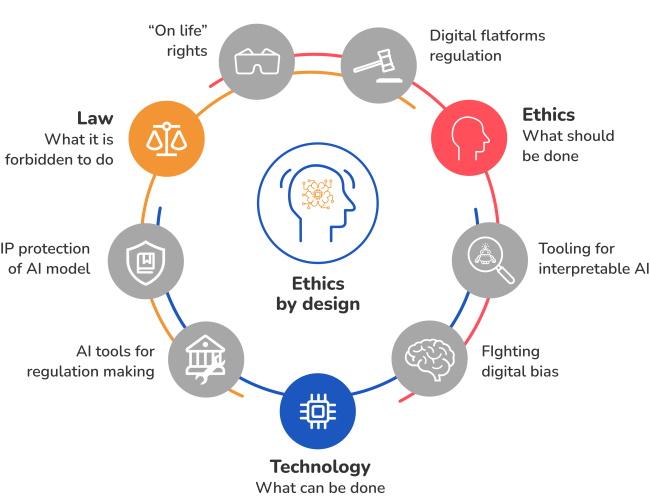
Maintaining Ethical Standards in AI Development
As the landscape of artificial intelligence continues to evolve at a rapid pace, it is imperative for budding entrepreneurs embarking on AI ventures to prioritize ethical standards. Ignoring the moral implications of AI can lead not only to societal harm but also to significant reputational damage for emerging companies. Here’s how to ensure your AI development remains grounded in ethical practices.
First and foremost, transparency is non-negotiable. A transparent approach in AI development fosters trust among users and stakeholders. This means being open about how AI algorithms work, the data being used, and the decision-making processes involved. Consider adopting a framework that promotes clarity, such as:
- Regularly publishing reports on AI performance and ethical considerations.
- Engaging in community discussions about AI ethics and its impacts.
- Implementing user-friendly interfaces that explain AI functions in layman’s terms.
Another critical aspect is accountability. Establishing clear lines of accountability within your organization is crucial for ethical AI development. This involves creating roles specifically focused on ethical oversight, ensuring that decisions made by AI systems can be audited and challenged. You might consider setting up:
- A dedicated ethics committee.
- Regular ethical training for your development team.
- A feedback mechanism for users to report ethical concerns.
Incorporating diversity in your team is equally essential. A diverse group of individuals brings varied perspectives, which can significantly reduce biases in AI systems. Foster an inclusive work environment by:
- Actively recruiting from underrepresented groups.
- Encouraging collaboration across disciplines.
- Providing equal opportunities for all team members to contribute to AI design.
Moreover, implementing robust data privacy measures cannot be overlooked. As AI systems often rely on vast amounts of data, safeguarding user information is paramount. This includes:
- Adopting best practices for data encryption.
- Regularly reviewing data usage policies to ensure compliance with regulations.
- Being explicit about user consent and data retention policies.
fostering a culture of continuous learning is essential. The field of AI is ever-changing, and companies must stay abreast of the latest ethical challenges and solutions. Encourage your team to engage in ongoing education through:
- Regular workshops on ethical AI practices.
- Subscription to journals and online courses focused on AI ethics.
- Participation in industry conferences and seminars.
By embedding these ethical standards into the DNA of your AI development process, you not only contribute to a more responsible tech landscape but also position your company as a trustworthy leader in the field. Embrace these practices, and you’ll pave the way for sustainable growth and innovation in your AI venture.
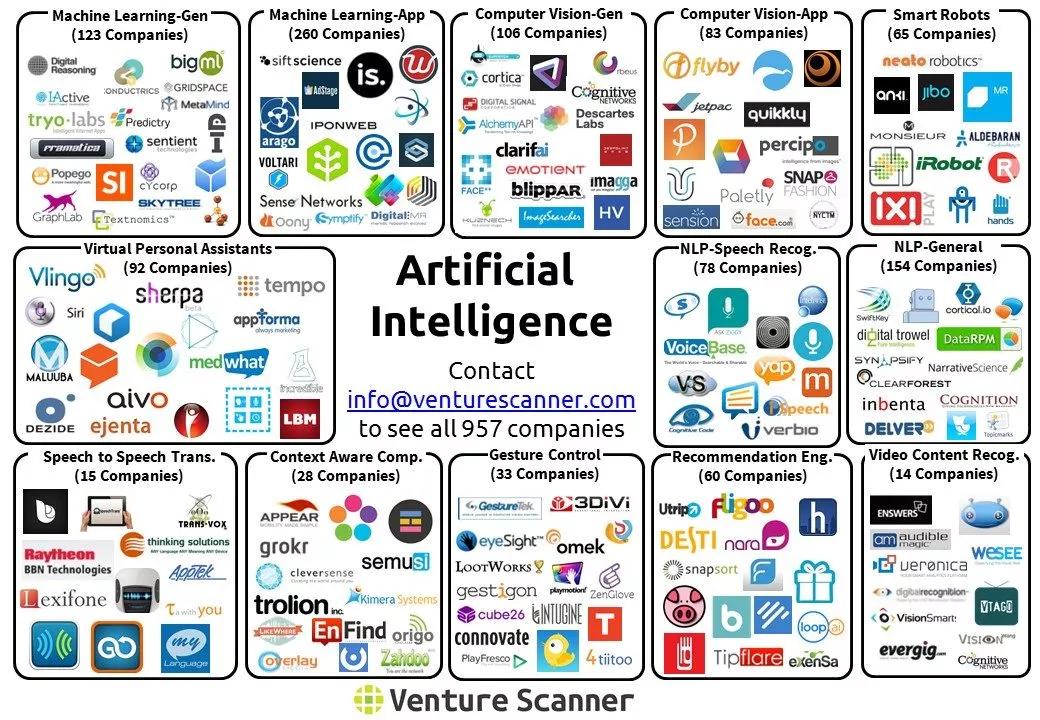
Preparing for the Future: Trends to Watch Beyond 2025
As we look ahead to the future of artificial intelligence, several key trends are emerging that entrepreneurs should keep an eye on. These trends will not only shape the landscape of AI but also offer unique opportunities for innovative business ventures. Here are some notable directions to consider:
- Increased Personalization: Consumers are craving personalized experiences, and AI is at the forefront of delivering tailored solutions. Businesses that leverage machine learning to analyze user data and provide customized services will find a competitive edge.
- AI Ethics and Governance: With AI’s growing influence, ethical considerations and governance frameworks are becoming essential. Companies that prioritize ethical AI will not only build trust but also enhance their brand reputation.
- Edge Computing: The shift towards edge computing means that AI applications can operate closer to where data is generated. This trend is crucial for real-time analytics and applications in sectors like healthcare and autonomous vehicles.
- AI in Sustainable Practices: As the world becomes more eco-conscious, AI’s role in sustainability will be critical. Innovations that help companies reduce waste, optimize resource usage, and promote green technologies will be in high demand.
- AI-Powered Automation: Businesses that embrace automation through AI can streamline operations and reduce costs. This trend is particularly relevant in manufacturing, logistics, and customer service industries.
To truly capitalize on these trends, aspiring entrepreneurs should consider the following strategic steps:
- Conduct Thorough Market Research: Understanding your target audience and their needs is vital. Keep an eye on industry reports and surveys to stay informed about emerging consumer behaviors.
- Build a Strong Team: Assembling a diverse team with expertise in AI, data science, and ethical practices will be crucial for your startup’s success. Collaboration fosters innovation.
- Invest in Technology: Stay ahead of the curve by investing in the latest AI tools and technologies. This includes cloud services, machine learning platforms, and data analytics software.
Moreover, businesses looking to thrive in this evolving landscape should consider exploring niche markets. Here’s a quick overview of some promising sectors:
| Sector | Opportunity |
|---|---|
| Healthcare | AI-driven diagnostics and personalized treatment plans |
| Finance | Fraud detection and predictive analytics for investments |
| Retail | Smart inventory management and customer insights |
| Education | Personalized learning experiences and AI tutors |
the future is bright for those willing to embrace the transformative power of AI. By keeping an eye on emerging trends and being proactive in your approach, you can position your AI startup for success in the years to come.
Frequently Asked Questions (FAQ)
Q&A: How to Start an AI Company in 2025 (+15 Best Business Ideas)
Q: Why should I consider starting an AI company in 2025?
A: Great question! The AI landscape is evolving at a breakneck pace, and there’s never been a better time to jump in. By 2025, industries across the board will be integrating AI into their processes, creating a massive demand for innovative solutions. Whether it’s enhancing customer experience, optimizing operations, or enabling data-driven decision-making, your AI company could be at the forefront of this transformation!
Q: What are the first steps I should take to start my AI company?
A: Start with a solid foundation! First, identify a niche where you see a gap or a problem that AI can solve. Next, build a business plan that outlines your vision, target market, and revenue model. Don’t forget to gather a skilled team; having the right talent is crucial in the tech world. And lastly, keep an eye on the latest AI trends and technologies—staying informed is key to staying competitive!
Q: What skills do I need to successfully run an AI company?
A: While technical skills in AI and machine learning are vital, don’t underestimate the power of business acumen. You’ll need to understand market dynamics, finance, and customer needs. Additionally, strong leadership and communication skills are essential for managing your team and collaborating with stakeholders. A well-rounded skill set will set you up for success!
Q: Can you give me some examples of profitable AI business ideas for 2025?
A: Absolutely! Here are a few ideas to spark your creativity:
- AI-Powered Health Diagnostics: Use AI to analyze medical data and improve patient outcomes.
- Personalized Learning Platforms: Create educational tools that adapt to individual learning styles.
- Smart Supply Chain Management: Optimize logistics using AI to reduce costs and improve efficiency.
- Automated Customer Service Bots: Develop intelligent chatbots that enhance customer interaction.
- AI-Driven Content Creation: Help businesses generate high-quality content quickly and efficiently.
- Predictive Maintenance Solutions: Offer services that foresee equipment failures before they happen.
- E-commerce Personalization Tools: Tailor online shopping experiences to boost sales.
- AI in Real Estate: Analyze market trends and predict property values using AI algorithms.
- Cybersecurity Solutions: Use AI to detect and prevent cyber threats in real-time.
- Financial Advisory Services: Implement AI for smarter investment strategies.
- Smart Home Automation: Create AI systems that enhance energy efficiency in homes.
- Voice Recognition Software: Develop voice-activated applications that improve accessibility.
- Emotion AI: Analyze human emotions for better marketing strategies.
- Transportation Optimization: Use AI to improve route planning and reduce traffic congestion.
- AI-driven HR Solutions: Streamline recruitment and employee engagement processes.
Q: How can I secure funding for my AI startup?
A: Funding can be a challenge, but there are several routes you can take! Start by tapping into your network for angel investors or venture capitalists interested in AI. Consider applying for grants or joining startup incubators that focus on tech innovations. Crowdfunding is also an option; platforms like Kickstarter can help you gauge interest in your idea while raising funds!
Q: What challenges should I be prepared for when starting an AI company?
A: Every entrepreneurial journey has its hurdles, and with AI, you might face regulatory issues, data privacy concerns, and the need to constantly innovate. Additionally, the tech landscape evolves rapidly, so staying ahead of the curve is crucial. It’s important to be adaptable and resilient—those who thrive are often the ones who can pivot when faced with obstacles!
Q: Any final tips for aspiring AI entrepreneurs?
A: Absolutely! Stay curious and keep learning; the AI field is always changing. Network with industry professionals, attend conferences, and engage in online forums. Surround yourself with a supportive community and don’t be afraid to ask for help. Lastly, be patient and persistent—building a successful AI company takes time and effort, but the rewards can be incredible!
By following these insights, you’re on the right track to launching an AI company that not only meets market needs but also drives meaningful change. Let’s get started on this exciting journey together!
In Conclusion
As we wrap up our journey into the exciting world of AI entrepreneurship in 2025, it’s clear that the landscape is brimming with opportunity. Whether you’re a seasoned tech veteran or a passionate newcomer, there’s never been a better time to dive into the realm of artificial intelligence.
With the 15 innovative business ideas we’ve explored, you now have a roadmap to harness the potential of AI and make a real impact in your chosen field. Remember, starting your own AI company isn’t just about the technology; it’s about solving real problems, understanding your audience, and staying agile in a rapidly changing environment.
So, what’s stopping you? Take that first step today! Research, network, and don’t be afraid to experiment. The future is unfolding right before our eyes, and your vision could be the next big thing in the AI space. Embrace the challenges, celebrate the wins, and remember that every great business starts with a single idea.
Now go out there and turn your aspirations into reality. The world of AI is waiting for your unique contribution!




